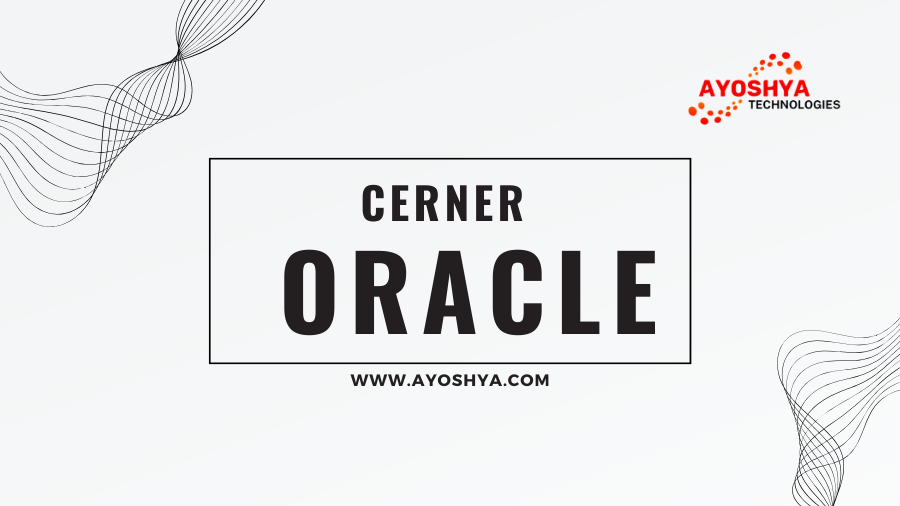Cerner Oracle Integration: Revolutionizing Healthcare Data Management
Cerner Oracle Integration: Revolutionizing Healthcare Data Management
In the intricate web of healthcare data management, the integration of Cerner and Oracle emerges as a transformative solution. This article explores the pivotal role of Cerner Corporation and Oracle in healthcare, the necessity of integration, key features, real-world impacts, and the future trends shaping the landscape.
1. Introduction
Healthcare data management is at the forefront of providing quality patient care. Cerner Oracle Integration stands as a beacon, addressing the challenges of fragmented healthcare data and ushering in a new era of efficiency and collaboration.
2. The Role of Cerner and Oracle in Healthcare
2.1 Cerner Corporation: Pioneering Healthcare Solutions
Cerner Corporation has been a trailblazer in healthcare solutions, offering electronic health records (EHR), population health management, and other innovative tools for healthcare organizations.
2.2 Oracle in Healthcare: A Database Powerhouse
Oracle, known for its robust database solutions, plays a crucial role in securely managing vast amounts of healthcare data, ensuring accessibility and integrity.
3. The Need for Integration in Healthcare Systems
3.1 Challenges of Siloed Healthcare Data
Silos of healthcare data lead to inefficiencies, errors, and hindered collaboration among healthcare professionals.
3.2 Benefits of Cerner Oracle Integration
Cerner Oracle Integration addresses these challenges by seamlessly connecting disparate systems, fostering data exchange, and promoting a holistic view of patient information.
4. Key Features of Cerner Oracle Integration
4.1 Seamless Data Exchange
Cerner Oracle Integration facilitates the seamless exchange of patient data between Cerner’s healthcare solutions and Oracle’s database, ensuring real-time access to critical information.
4.2 Enhanced Data Security and Compliance
Data security is paramount in healthcare. This integration ensures that patient data remains secure, adhering to strict compliance standards such as HIPAA.
5. Implementation of Cerner Oracle Integration
5.1 Step-by-Step Integration Process
Implementing Oracle Integration involves a systematic approach, from assessing current systems to configuring interfaces and testing.
5.2 Overcoming Common Implementation Challenges
Challenges may arise during integration, but with careful planning and expertise, common issues can be efficiently addressed.
6. Impact on Healthcare Efficiency and Patient Care
6.1 Streamlining Workflows for Healthcare Professionals
Integrated systems streamline workflows, allowing healthcare professionals to access and update patient information seamlessly.
6.2 Improving Patient Outcomes Through Unified Data
A unified view of patient data contributes to better diagnoses, treatment plans, and ultimately improves patient outcomes.
7. Cerner Oracle Integration vs. Traditional Healthcare Systems
7.1 Performance and Scalability
Compared to traditional systems, Oracle Integration offers enhanced performance and scalability to meet the evolving demands of healthcare.
7.2 Cost-effectiveness and Return on Investment
The integration proves cost-effective in the long run, with a significant return on investment through improved efficiency and patient care.
8. Real-world Success Stories: Transforming Healthcare Delivery
8.1 Case Studies of Successful Cerner Oracle Implementations
Explore real-world examples where Oracle Integration has transformed healthcare delivery, showcasing tangible benefits.
8.2 Positive Impacts on Healthcare Organizations
From improved operational efficiency to enhanced patient satisfaction, the positive impacts on healthcare organizations are noteworthy.
9. Challenges and Solutions in Cerner Oracle Integration
9.1 Interoperability Challenges
Interoperability challenges may arise, but proactive measures and industry standards help overcome these hurdles.
9.2 Best Practices for Smooth Integration
Adopting best practices, such as thorough testing and involving key stakeholders, ensures a smooth Oracle Integration process.
10. Future Trends: Innovations in Healthcare Data Management
10.1 Artificial Intelligence and Predictive Analytics
The future sees the integration of AI and predictive analytics, empowering healthcare professionals with insights for proactive and personalized patient care.
10.2 Cloud-based Solutions for Healthcare Systems
Cloud-based solutions offer flexibility and accessibility, paving the way for more efficient healthcare data management.
11. Tips for Successful Cerner Oracle Integration Adoption
11.1 Comprehensive Training Programs
Comprehensive training programs are essential for healthcare professionals to fully leverage the integrated system.
11.2 Continuous Monitoring and Optimization
Continuous monitoring and optimization ensure that the integrated system aligns with evolving healthcare needs.
12. Conclusion
In conclusion, Cerner Oracle Integration marks a paradigm shift in healthcare data management. Its seamless collaboration between Cerner’s healthcare solutions and Oracle’s robust database brings efficiency, security, and improved patient care to the forefront.
FAQs (Frequently Asked Questions)
Q1: How does Cerner Oracle Integration enhance data security?
It Integration enhances data security by implementing robust encryption and compliance with healthcare standards like HIPAA.
Q2: Can it Integration be adopted by small healthcare practices?
Yes, It Integration is scalable and can be adopted by healthcare practices of varying sizes, providing benefits regardless of scale.
Q3: What are the key challenges in integrating Cerner and Oracle systems?
Interoperability challenges may arise during integration, but proactive measures and industry standards help overcome these hurdles.
Q4: How does Cerner Oracle Integration contribute to better patient outcomes?
By providing a unified view of patient data, It Integration contributes to better diagnoses, treatment plans, and ultimately improves patient outcomes.
Q5: Are there ongoing costs associated with maintaining Oracle Integration?
While there may be maintenance costs, the long-term benefits in terms of improved efficiency and patient care result in a significant return on investment.
You may be interested in:
Robotic Process Automation (RPA)



